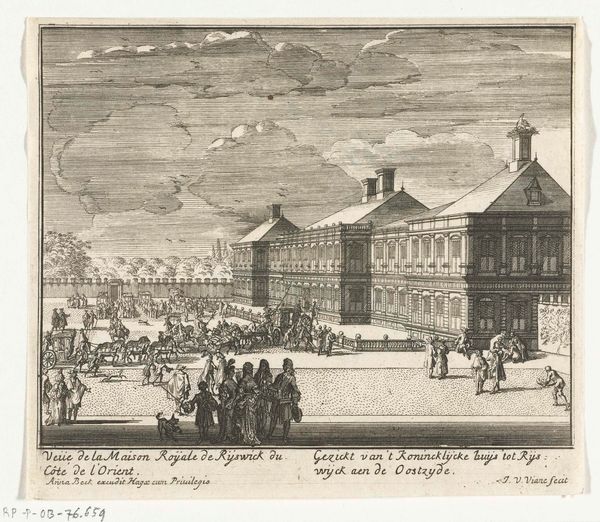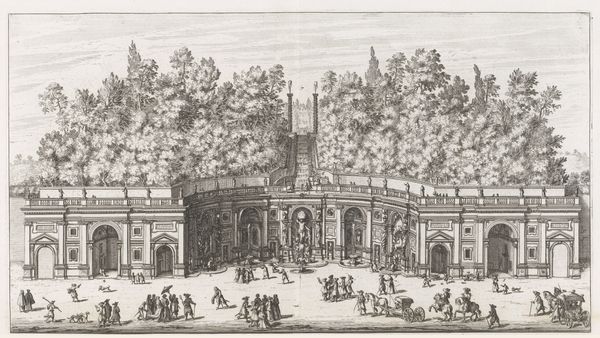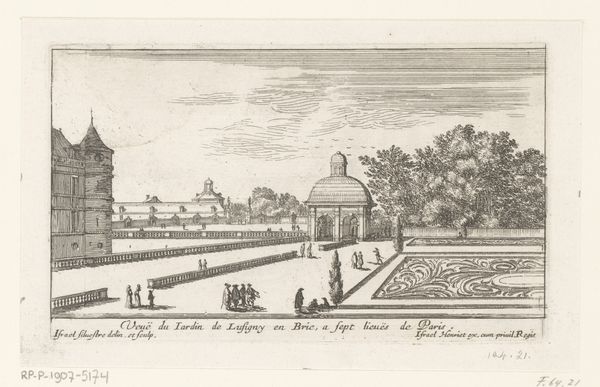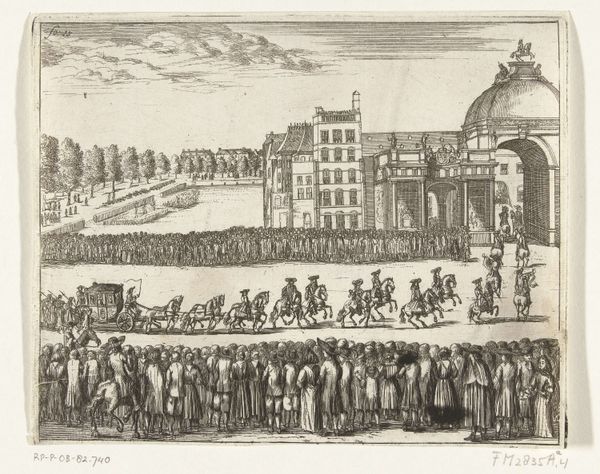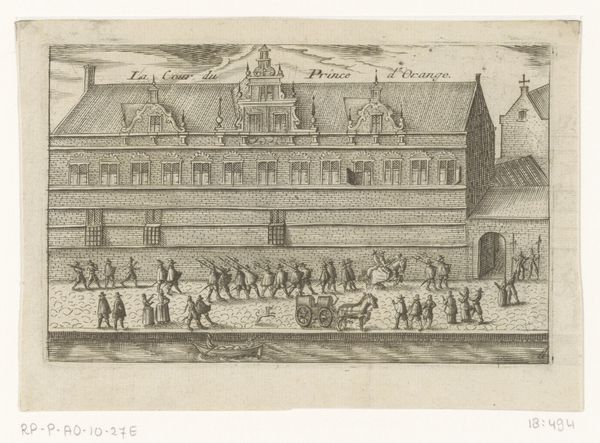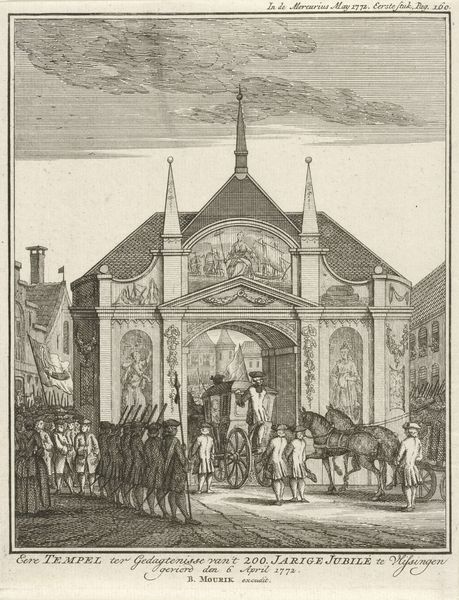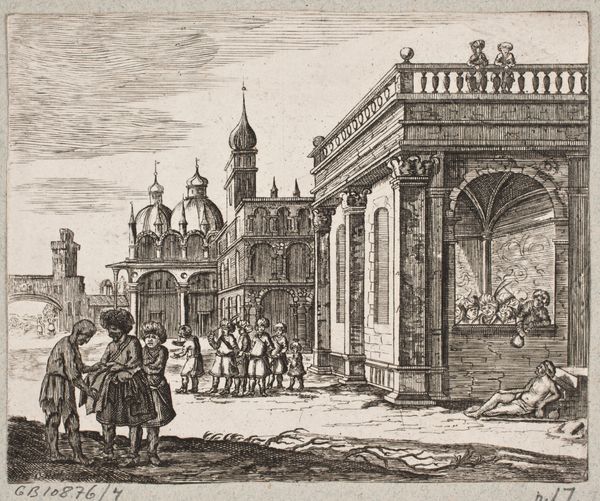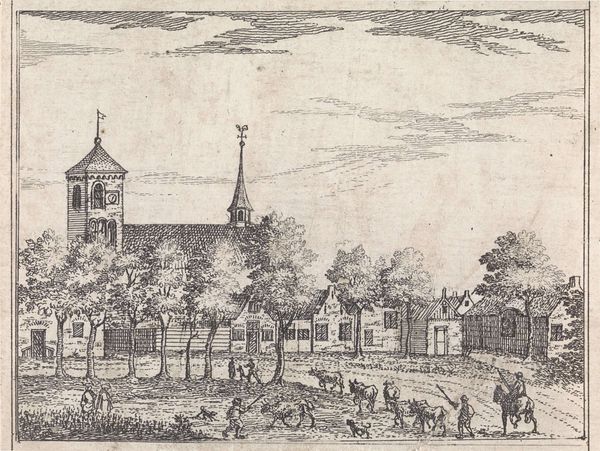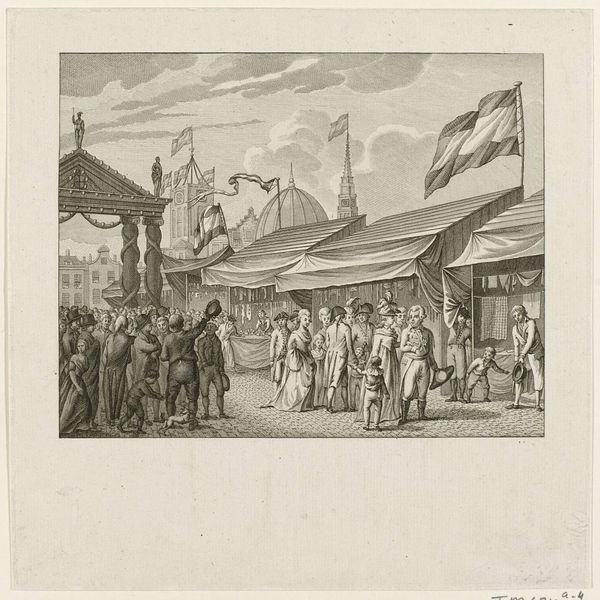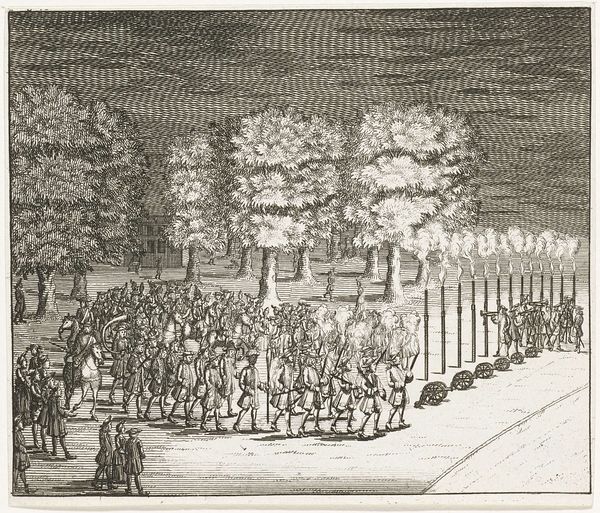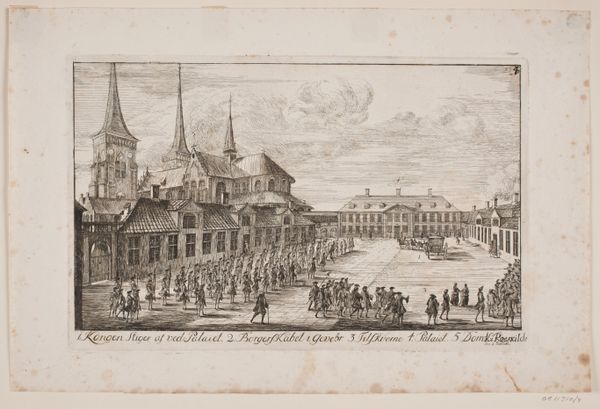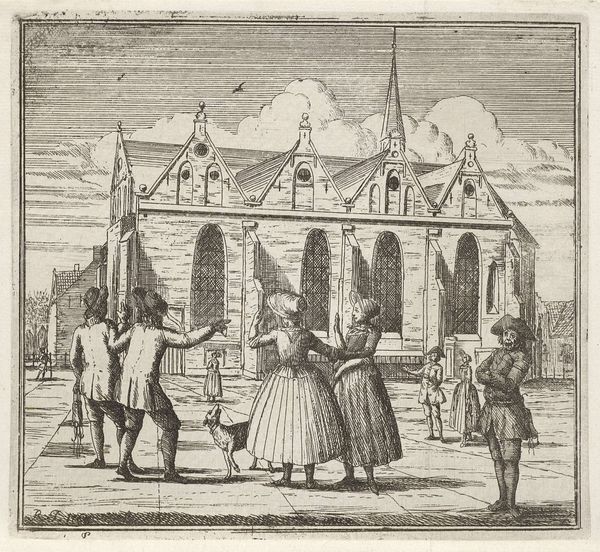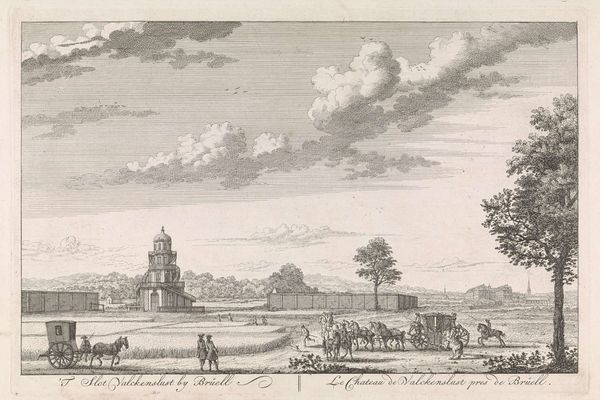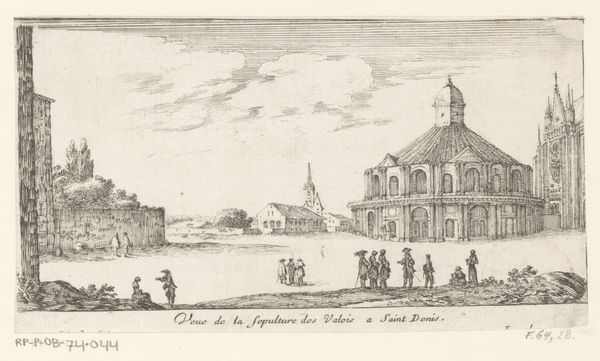
print, etching, engraving, architecture
#
dutch-golden-age
# print
#
pen sketch
#
etching
#
old engraving style
#
line
#
cityscape
#
genre-painting
#
engraving
#
architecture
Dimensions: height 141 mm, width 282 mm
Copyright: Rijks Museum: Open Domain
This etching of the Rotterdam Stock Exchange was created by Joost van Geel in the 17th century. Van Geel used the printmaking technique of etching, where lines are incised into a metal plate using acid, allowing for detailed and reproducible images. Here, the material qualities of ink on paper capture the bustling activity of the Exchange. Look closely, and you’ll notice the composition focuses our attention on the volume of people gathered, signaling the importance of the Stock Exchange as the center of trade, and the rise of capitalism. Van Geel’s choice of printmaking, a method of production which favors efficiency, aligns with the broader theme of commerce depicted in the scene. Understanding the materials and processes used in creating this etching allows us to reflect on the relationship between art, commerce, and society in 17th-century Rotterdam. By highlighting the means of production, we can appreciate how van Geel’s work goes beyond mere representation, offering insights into the economic and social fabric of its time.
Comments
No comments
Be the first to comment and join the conversation on the ultimate creative platform.
